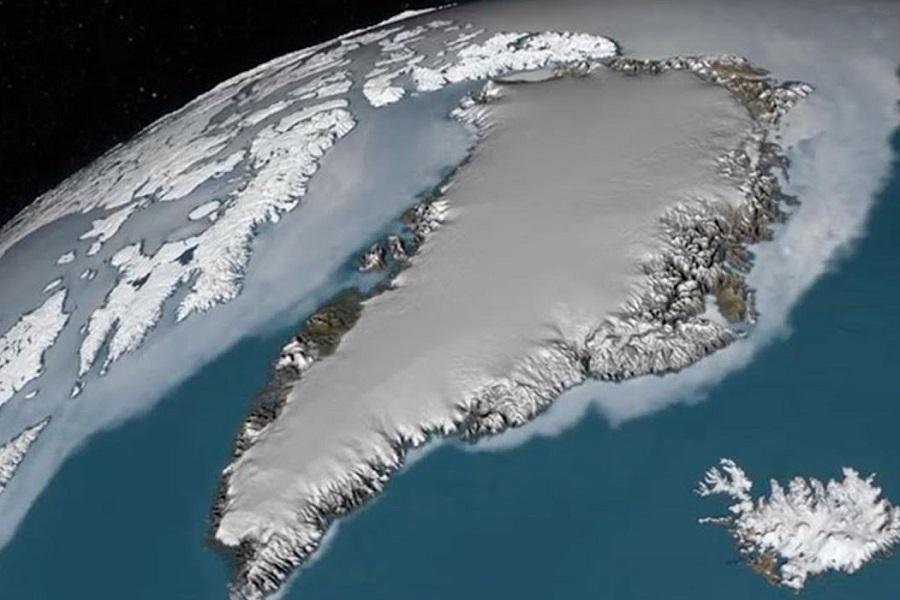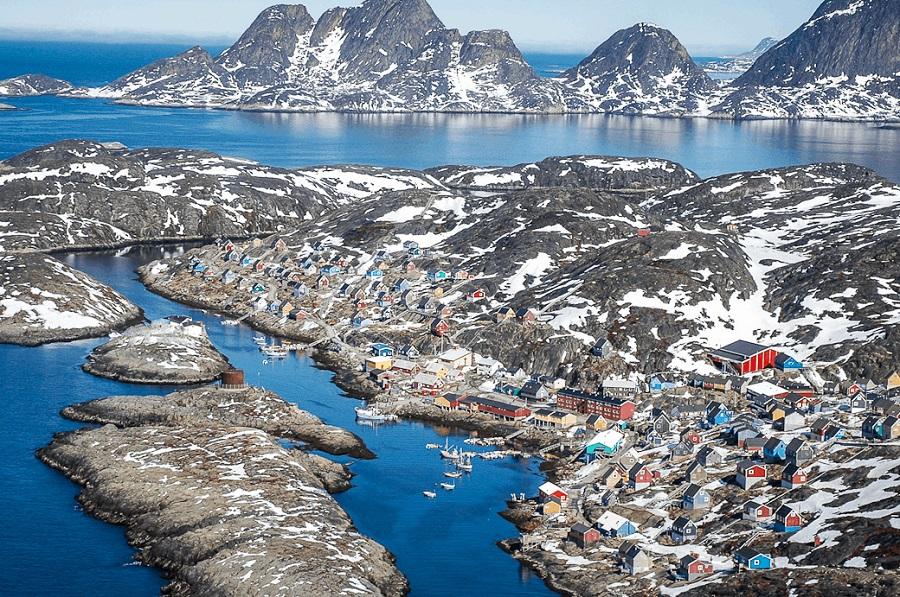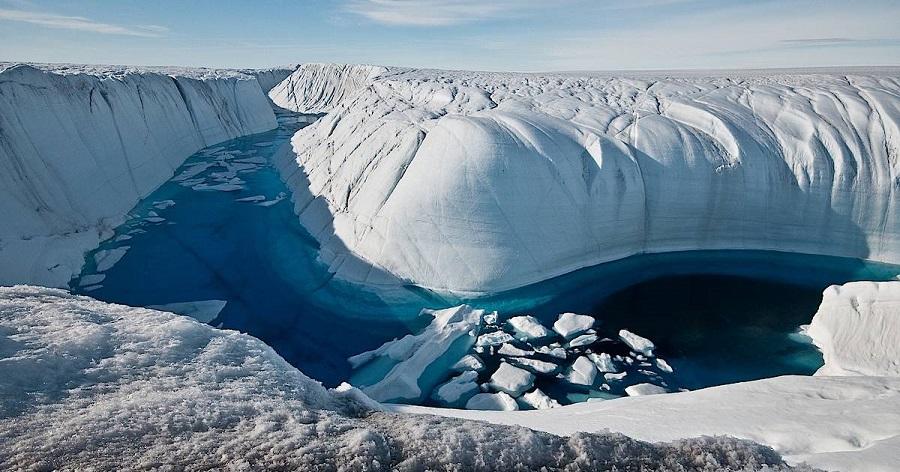
A special island
Back in the late 1860s, President Andrew Johnson considered the possibility of Greenland entering the United States. Shortly after the end of World War II, the administration of President Harry Truman offered Denmark $100 million in gold (about $1.7 billion in terms of the current exchange rate) for the transfer of this Arctic island with an area of more than 2.1 million square kilometers to America.
The Danish authorities refused, but in 1951 they concluded a defense agreement with the US authorities, according to which the American Pituffik space base appeared in Greenland. It is equipped with an intercontinental ballistic missile tracking system, is located far beyond the Arctic Circle and is the northernmost outpost of the American armed forces.
It is Pituffik that now remains the main link between the USA and Greenland. The current contingent of the base is more than 600 people, including 200 American military personnel. At the same time, the permanent contingent of the Danish army on the island is only 75 people.
Geographically, Greenland belongs to North America, but historically and legally it has been considered a Scandinavian territory for many centuries. In the 10th century, it was discovered by the Norwegian Vikings. In 1536, when Norway formed a union (a union of states headed by one monarch) with Denmark, Greenland became part of Denmark as a colony.
The island remained under Danish control after the dissolution of the union in 1814. But after World War II, the government abolished Greenland’s colonial status and made it a full-fledged part of the Danish Kingdom, and in 1979 granted it the status of autonomy.
Since then, Greenland has become self-governing in matters of domestic policy, education, social and medical services, judicial proceedings and law enforcement. The autonomous territory has its own flag, in the same colors as the Danish one, but with a white and red circle inside.
Since 2009, Greenlandic, belonging to the Eskimo-Aleut group, has become the only official language on the island. In the same year, 2009, the Greenlanders received the right to hold a referendum on independence (however, it has not been held since). Denmark currently controls Greenland only on matters of national defense and foreign policy.
The population of Greenland as of 2022 is approximately 56,500 people (despite the fact that Greenland is the largest island in the world by area). Of these, almost 90% are representatives of indigenous peoples, Greenlandic Inuit, and only about seven and a half percent are Danes. More than 80% of the island’s territory is covered by ice.
Potentially, control over it could give the United States an advantage in a geopolitical confrontation with China and Russia. Greenland is also rich in deposits of oil, gases and valuable minerals. It’s hard to say which of these two factors prompted Trump to talk about annexation right now.
“It should become part of the USA”

For the first time, Trump showed interest in joining Greenland back in his first term as president, in 2019. Anyway, in 2019, opinions were divided among Trump’s associates: some considered the possible annexation of Greenland to be a bargain, while others did not take the president’s reasoning seriously.
Some suggested that Trump was interested in the island not because of its political or economic prospects, but to demonstrate his personal power. However, six years ago, the Danish government reacted to the proposal to negotiate the acquisition of Greenland with a sharp refusal. In response, Trump canceled a planned visit to Copenhagen.
Among the reasons that prompted Trump to resume discussions about the annexation of Greenland now, but in a more decisive manner, experts cite the prospects for the development of minerals: the Danish autonomous territory contains deposits of 43 of the 50 minerals that the US government considers “critically important.”
We are talking about the so-called rare earth elements. The total reserve of these minerals in the world is estimated at less than 160 million tons. Of these, 38.5 million are in Greenland. China is considered to be the leader in the extraction of rare earths. Trump probably wants to close the gap with a geopolitical opponent.
In the past, the United States has repeatedly tried to prevent the rapprochement between the Danish autonomous Territory and China — for example, in 2018, when Chinese banks offered to finance the construction of a network of airports in Greenland. As a result, the US Department of Defense took a unique step and financed the construction project jointly with the Danish authorities.
Another potential benefit for the United States from joining Greenland is the development of new trade routes. Due to the active melting of glaciers, the duration of the sea season is constantly increasing. Control of Greenland in the long term promises more opportunities for international trade.
Experts also call the possibility of deploying their contingent in Greenland an equally important argument for Trump and his supporters. In the context of growing global tensions and deteriorating US relations with China and Russia, the US military presence in the Arctic can become a serious deterrent for possible opponents.
Trump himself said that Greenland’s entry into the United States is necessary to protect the “free world.” Trump did not rule out military action to seize Greenland, nor economic coercion — according to him, if Denmark refuses to transfer Greenland, the United States may impose “extremely high” tariffs on imports of Danish goods.
“The age-old struggle for freedom”

In response to Trump’s statements, the Danish government announced an increase in the defense budget by at least $1.5 billion. Danish Foreign Minister Lars Loekke Rasmussen assured that the country’s authorities were taking the situation extremely seriously, but added that he and his colleagues did not want an “escalation of the war of words.”
The idea of joining was sharply rejected by the Prime Minister of Greenland, Mute Egede. The politician wrote on his social media: “We are not for sale and we will never be for sale. We should not forget about our age-old struggle for freedom.” Egede represents the supporters of full independence in Greenlandic politics — in his New Year’s speech, he called on his compatriots to “throw off the shackles of colonialism.”
Against the background of all these talks about freedom, the head of the Greenlandic government promised that after the parliamentary elections scheduled for April 2025, “important steps” would be taken to secede the autonomous territory from the Danish Kingdom. Egede and his supporters can use Trump’s threats to achieve even greater independence from the Danish authorities, and then independence.
Given the pressure exerted on the Danish government by Trump, Egede did not rule out that a referendum on granting Greenland independence would be held this spring, simultaneously with the parliamentary elections. Experts suggest that such a development may suit the future American president quite well.
According to Rosanne McManus, an associate professor of political science at Penn State University, Trump’s threats to annex Greenland represent a variation of the so-called “madman strategy.” This style of negotiation is designed to create the appearance of inappropriate behavior and confuse opponents by taking the initiative in controversial issues.
One example of the application of the “madman strategy” is considered to be the rhetoric of US President Richard Nixon during the Vietnam War, who regularly threatened the United States’ opponents in Southeast Asia with the use of nuclear weapons. McManus believes that Trump is intentionally acting in a similar way and is not necessarily seriously counting on Greenland’s annexation.
The US invasion of Greenland could provoke conflict within NATO, since both the United States and Denmark are members of the alliance. Under the terms of the collective Defense Treaty, an attack on one of the NATO members should be regarded as an attack on all. However, it is not entirely clear how to interpret this situation if another country from the alliance acts as the aggressor.
By Basil Legeido


